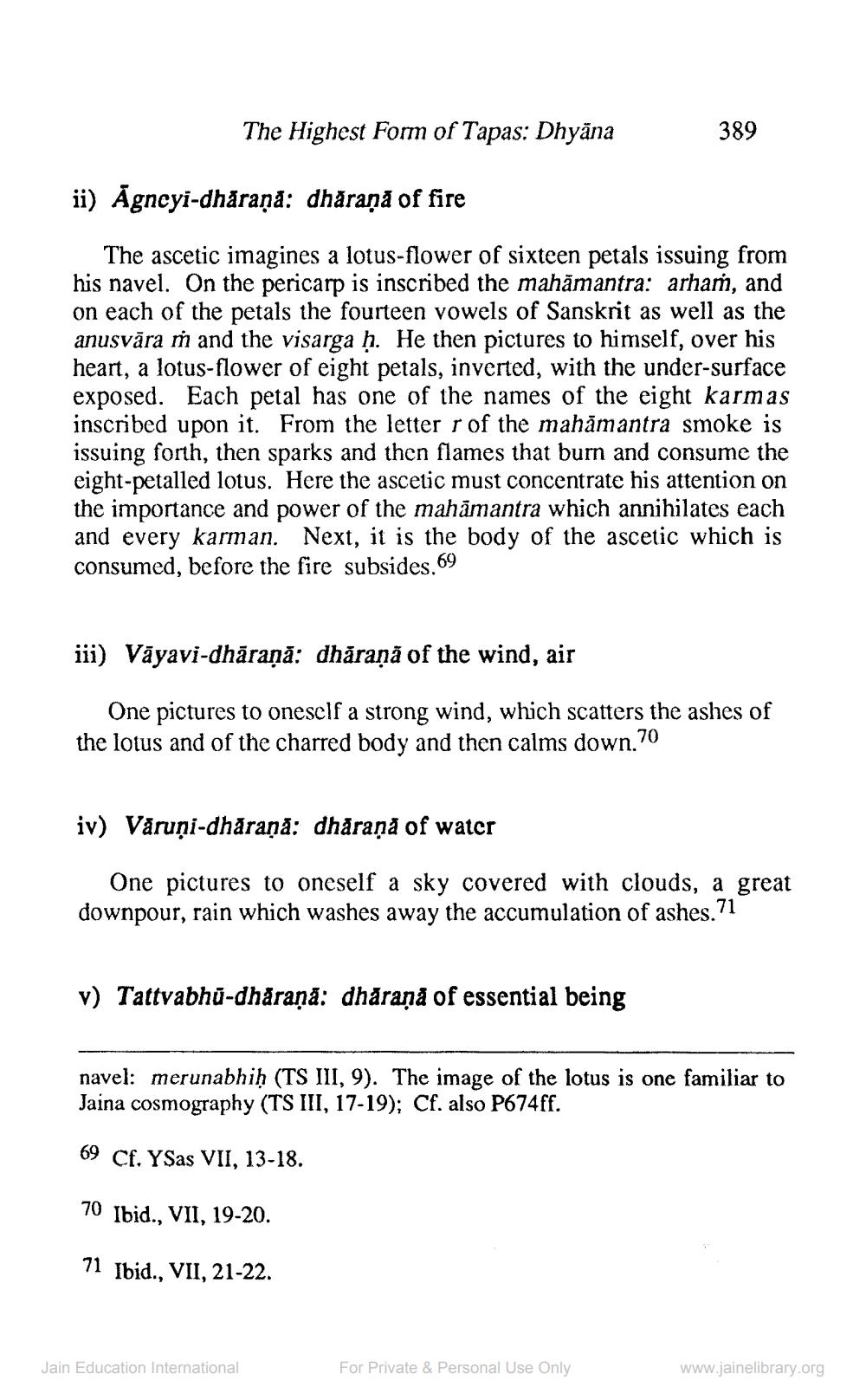________________
The Highest Form of Tapas: Dhyāna
389
389
ii) Āgncyi-dhåraņa: dhăraņā of fire
The ascetic imagines a lotus-flower of sixteen petals issuing from his navel. On the pericarp is inscribed the mahāmantra: arham, and on each of the petals the fourteen vowels of Sanskrit as well as the anusvāra ṁ and the visarga ḥ. He then pictures to himself, over his heart, a lotus-flower of eight petals, inverted, with the under-surface exposed. Each petal has one of the names of the eight karmas inscribed upon it. From the letter r of the mahāmantra smoke is issuing forth, then sparks and then flames that burn and consume the eight-petalled lotus. Here the ascetic must concentrate his attention on the importance and power of the mahāmantra which annihilates each and every karman. Next, it is the body of the ascetic which is consumed, before the fire subsides. 69
iii) Vāyavi-dhāraņā: dhāraņā of the wind, air
One pictures to oneself a strong wind, which scatters the ashes of the lotus and of the charred body and then calms down.70
iv) Väruņi-dhărana: dhåraņa of water
One pictures to oneself a sky covered with clouds, a great downpour, rain which washes away the accumulation of ashes. 71
v) Tattvabhū-dharanā: dharană of essential being
navel: merunabhiḥ (TS III, 9). The image of the lotus is one familiar to Jaina cosmography (TS III, 17-19); Cf. also P674ff.
69 Cf. YŞas VII, 13-18.
70 Ibid., VII, 19-20.
71 Ibid., VII, 21-22.
Jain Education International
For Private & Personal Use Only
www.jainelibrary.org




